

COSTA RICA
July 2003

2 of 7


COSTA RICA
July 2003


2 of 7
The next day we have breakfast by the sea, then up into the mountains for a morning hike in the steep-sided
jungle that rises from the beach. Down a trail that crosses a stream, where we pause to cool off and pose for a portrait.
We search the banks for a frog Ron and I have never seen. We’re rewarded when Quetzal notices the movement
of a tiny red speck in the form of a Granular Poison Dart Frog.
.
Farther from the stream we come upon another Dendrobates hiding and hopping among rotting logs and moist
leaf litter, this time the larger Green-and-Black Poison Dart Frog.
Don’t see too much else except for a few lizards. One is a tiny species that keeps teasing us as it darts and
disappears under the leaves of the forest floor, but eventually we get one in hand. Also see a pretty Yellow-headed
Gecko peering out from a crevice.
I’m also pleased to find Spiny-tailed Iguanas, looking just as prehistoric as in the old science fiction movies that
cast them as dinosaurs. It’s exciting to see them for the first time in the wild!
Well, not exactly in the wild. Along the Pacific coast these lizards live in town, as exotic as squirrels in New
Jersey, and just as annoying, lurking around outdoor cafés and raiding picnic baskets. Still, if you must have urban
pests, I prefer mine scaly.
Late in the afternoon we drive a few hours south to the Osa Peninsula. En route we pass a plane that just the
day before had made an emergency landing in a cattle field, skidding through the fence and coming to a stop at the
edge of the highway (miraculously, no injuries). Coming around a curve on the Osa we too find ourselves
unexpectedly confronted by cattle as we come to a stop on the highway (miraculously, no injuries).
Arrive at our destination after dark and decide to go road cruising instead of night hiking. We come across a
couple of recent roadkills, a Mussarana and a Boa Constrictor, two species we’ve never seen in the field and were
really eager to find alive. From its overhead perch on a powerline we’re watched silently by a Striped Owl, no doubt
also disappointed at not finding live snakes (but for a different, more culinary motive).
We settle for a few common species. Tungara Frogs, a type of Eleutherodactylid, are chorusing in a swampy spot
by the side of the road. Note how the vocal sacs of this male inflate the underside of his entire body, not just beneath
the throat. This helps explain the incredibly loud call from such a little guy.
Also find a Northern Cat-eyed Snake, the most frequently found snake of our trip; not surprising, since it’s one
of the most wide-spread species throughout all of Central America.
We are surprised, however, by another kind of Cat-eyed Snake, which turns out to be the find of the night: the
relatively rare Mangrove species. Whereas L. septentrionalis is common because its prey ― frogs, frog eggs, toads, and
lizards ― can be found virtually anywhere in the rainforest, L. rubricata is a specialist feeding primarily on crabs, and
therefore is found only in a limited range along the coast.
This is also the start of a distinctive theme, the first of several black-and-red snakes we find on this trip.
Ron, Monica, Eitan, Quetzal

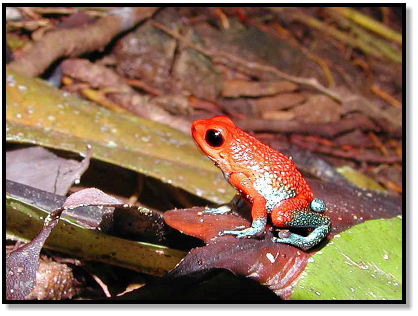
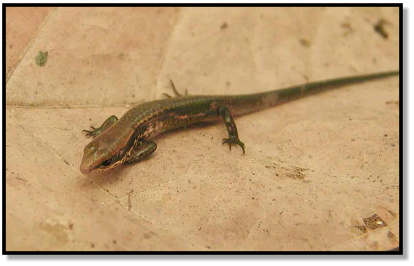
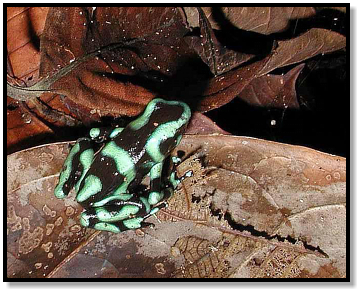

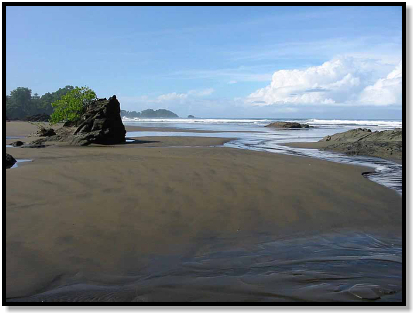

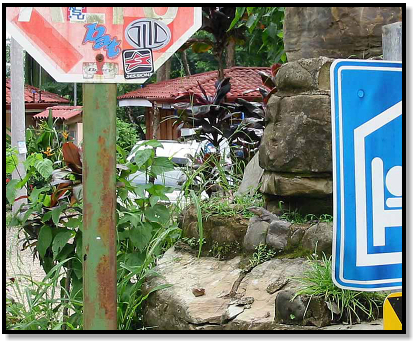
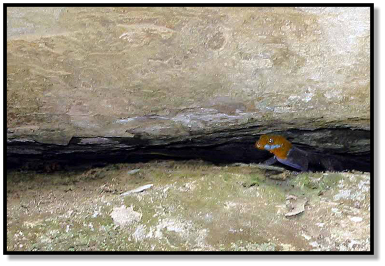
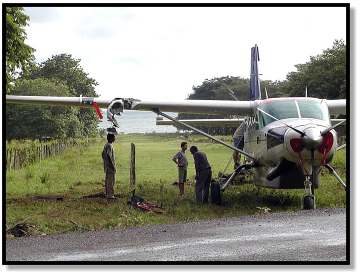
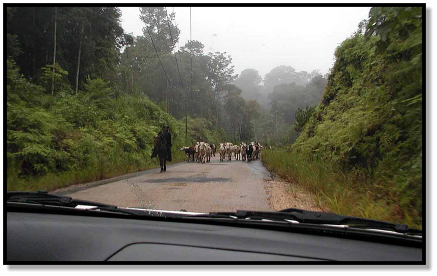
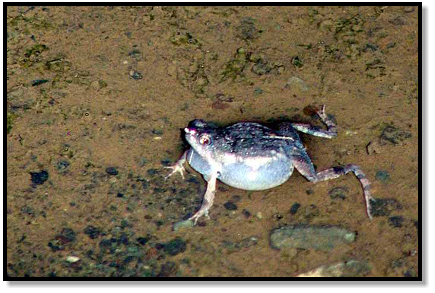
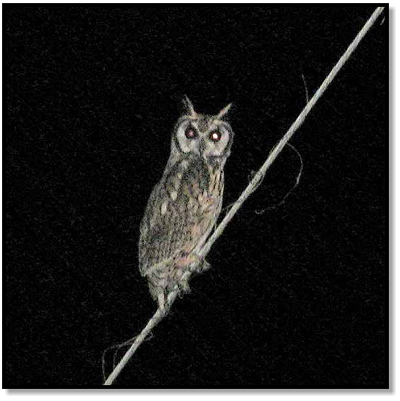

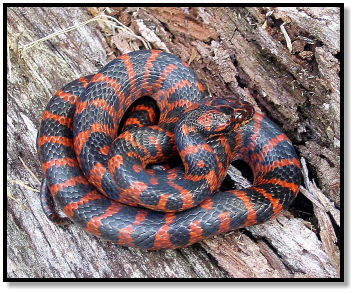
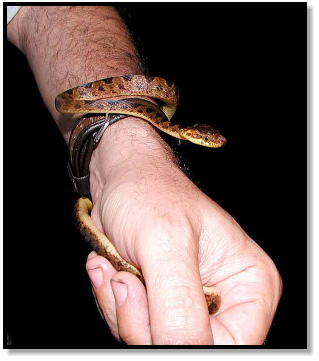
Granular Poison Dart Frog
Dendrobates granuliferus
Green-and-Black Poison Dart Frog
Dendrobates auratus
Striped Litter Skink
Sphenomorphus cherriei
Spiny-tailed Iguana
Ctenosaurus similis
Tungara Frog
Physalaemus pustulosus
Northern Cat-Eyed Snake
Leptodeira septentrionalis
Mangrove Cat-Eyed Snake
Leptodeira rubricata
Yellow-headed Gecko
Gonotodes albogularis








